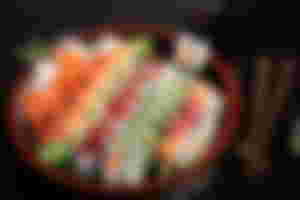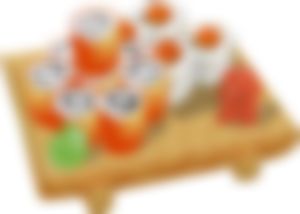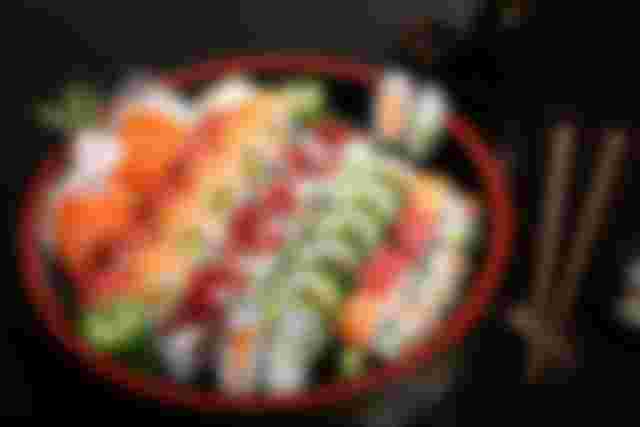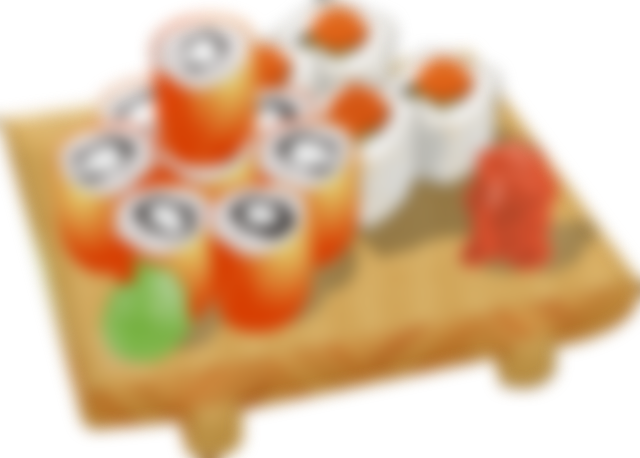There was a time when the only thing I knew about Japanese food were the words tempura and teriyaki. Later on, I learned about kawaii and bento boxes. As time passed, my knowledge grew to encompass: miso, sashimi, and wasabi. I also remember reading that Japanese cuisine was one of the healthiest diets in the world; and apparently that's why Japanese people live so long.
Here in Texas, a very smart Japanese entrepreneur realized that what Texans needed in their diet was … SUSHI!!
Businessman Glen Yoshiaki Gondo, who is honorably and affectionately referred to as the “sushi king”, is a visionary and a genius! Here I am in the heart of cattle country; thinking only of barbecued beef brisket, chicken fajitas, nachos and Jalapeño peppers! The last thing that would have ever crossed my mind was to try to sell sushi to a bunch of Texans!
Mr. Gondo's product is for sale at a popular Texas grocery store chain. Of course, he admitted it's not what the Japanese would call “authentic”. He did change up the recipe to suit the American palette. But no matter. Because of him, I was introduced to sushi.
My First Food Experience?
The best part of grocery shopping are the free food samples. 😁 One day they were giving away free sushi samples. Soy sauce and wasabi were offered as condiments. There was just a small green dab of wasabi paste. Never having eaten sushi or wasabi, I picked up the small piece of sushi and wiped it with that dab of wasabi paste. My daughter was going to try to warn me but before she could say anything, I put the whole thing in my mouth. WHOA!! Did you know that wasabi is excellent for clearing your sinuses? LOL. 😁 So help me I thought my head was going to explode.
Anyway! Ever since that day, every once in a while I go into my H-E-B (the local grocery store) and treat myself to sushi! There are even Japanese chefs who work behind the counter and you can watch them make the sushi.

Interesting Food History Facts About Sushi
“While Japan is certainly the sushi capital of the world – and responsible for introducing the dish to travelers – sushi traces its origins back to a Chinese dish called narezushi. This dish consisted of fermented rice and salted fish. And, despite what you may think, it wasn't fermented and salted for flavor.” (SOURCE: A Brief History of Sushi and Why It's So Popular Today | Roka Akor)
“In the 1820s, a man named Hanaya Yohei found himself in Edo. Yohei is often considered the creator of modern nigiri sushi, or at the very least its first great marketer. In 1824, Yohei opened the first sushi stall in the Ryogoku district of Edo.” (SOURCE: History of Sushi | The History Kitchen | PBS Food)
“Sushi was already being served in the United States by the early 1900s, following an influx of Japanese immigration after the Meiji Restoration. The first sushi shop in the U.S. reportedly opened in 1906 in the Little Tokyo neighborhood of Los Angeles.” (SOURCE: History of sushi – Wikipedia)

A Related Note About Seaweed
On a related note, one other ingredient I have learned about that is used in Japanese food is seaweed. It's used to make sushi and lots of other recipes. There are several edible varieties of seaweed used in Japanese cooking (Nori; Kombu Kelp; Wakame; Hijiki; and Mozuku). It has so many health benefits it is considered a super food. However, this is an important health warning: “Due to the high level of iodine, those with thyroid disease or susceptible to it should enjoy seaweed with caution. If you are advised to be on a low-sodium diet, you want to be careful with certain types of seaweeds which may have higher level of sodium.” Learn more: Discover Seaweed: The Essential Ingredient of the Japanese Diet • Just One Cookbook

Similar Articles on Read.Cash:

Related Links:
Homemade Vegan Sushi Recipes - Veggies Don't Bite
Veggie Sushi 4 Ways Recipe by Tasty
Let's Do Sushi! Keep It Kosher!
FUN FACT: "Sushi" means "Hand formed". (Source: TriviaGenius.com)

Thanks for reading.
Lead image credit: Bowl of Sushi by Hiroshige (1797–1858)




